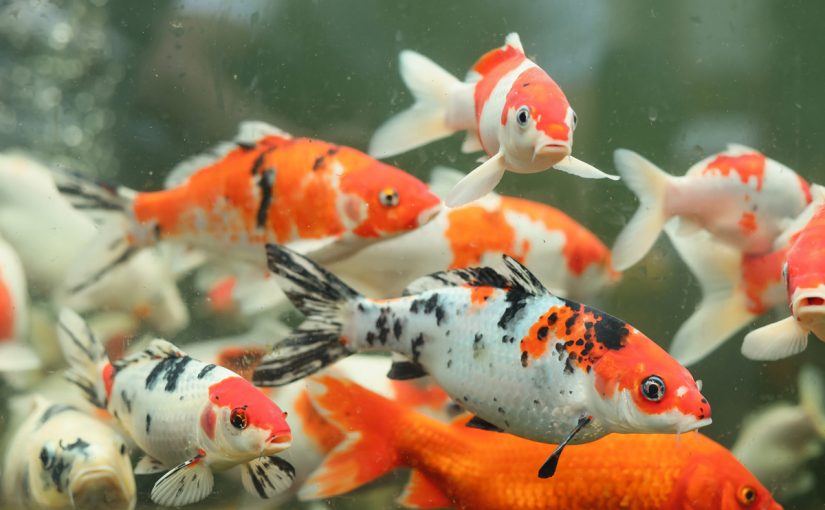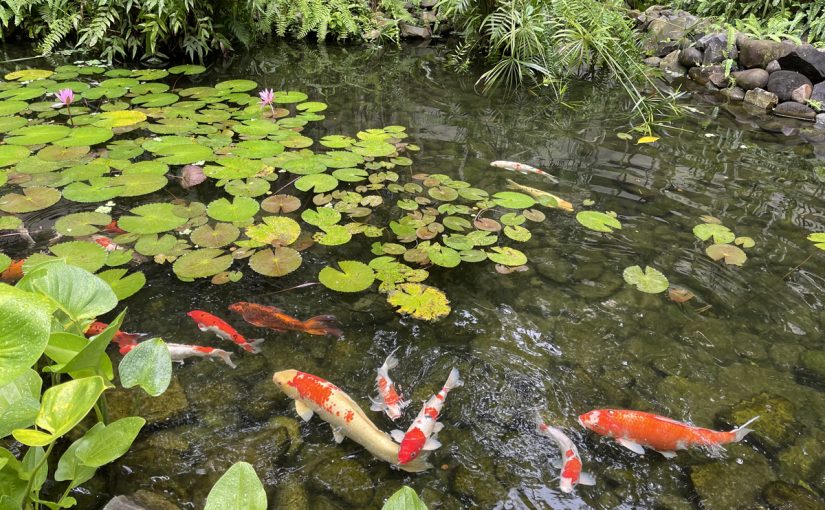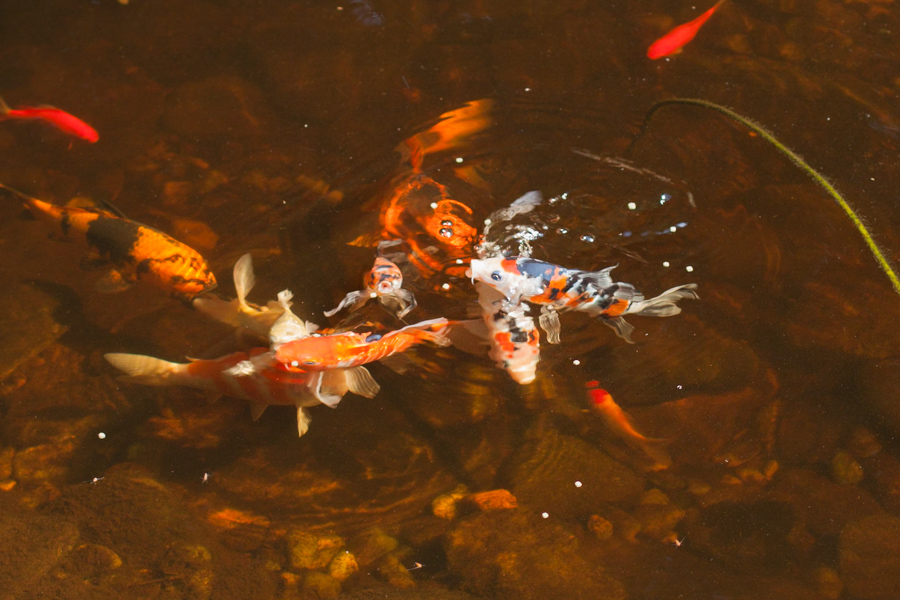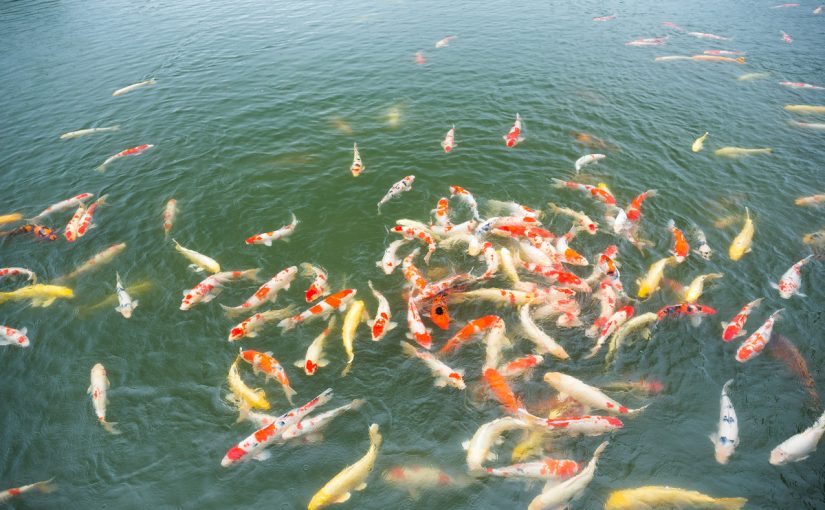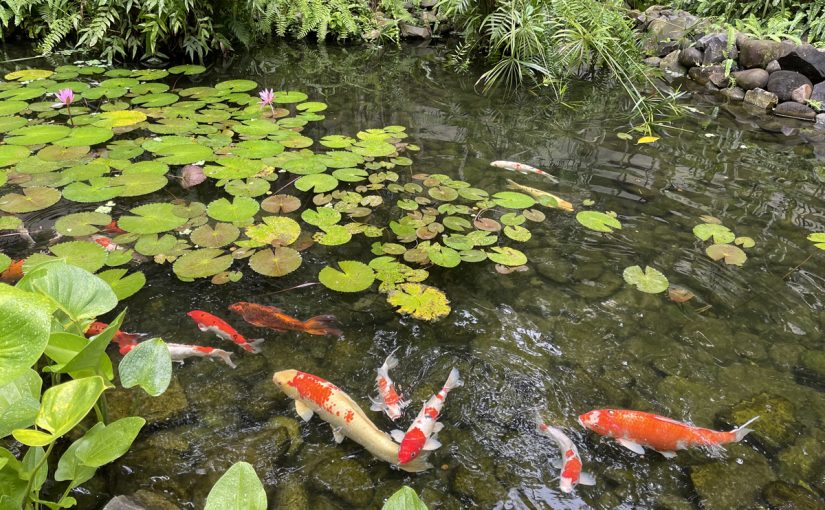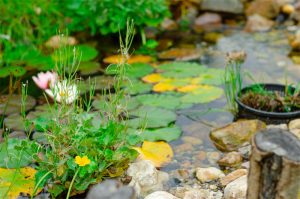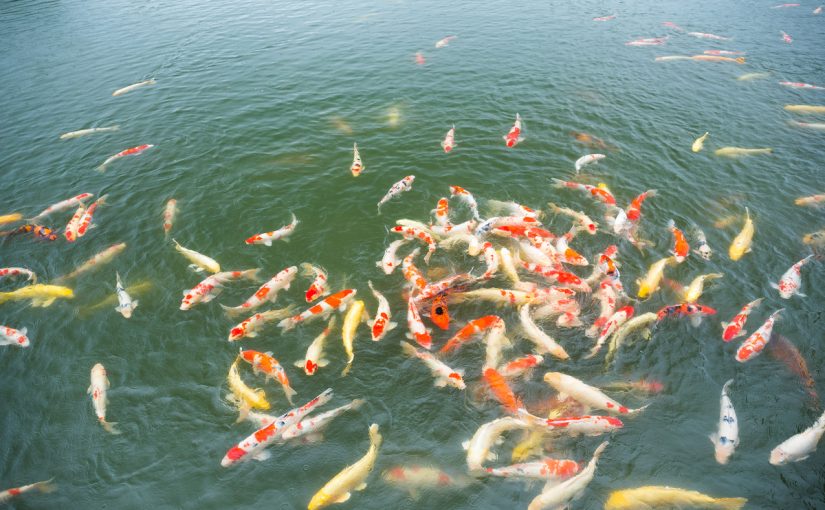Koi fish are renowned for their survival skills, even in the harshest outdoor conditions. The obvious question is, do these fish hibernate during the winter? The answer is yes, but not in the traditional way. Let’s take a look at what you need to know about Koi fish hibernation methods below.
Do Koi Fish Hibernate In The Winter?
Unlike some animals, koi fish do not truly hibernate. Instead, they enter a state referred to as torpor. This state helps them both conserve energy and survive frigid temperatures.
While in torpor, the Koi’s metabolism and breathing will slow down. They will move very slowly and stop eating due to the fact it takes food far too long to process.
Koi will enter this state when temperatures hit 40°F or below. When temperatures start to dip around 50°F, the Koi will become sluggish.
Winter Koi Pond Maintenance Tips
Unlike northern climates where ponds freeze over, winter in the Valley means daytime highs in the 60s and 70s with chilly nights that can dip into the 30s.
While you won’t need to worry about thick ice, your koi will still experience changes in metabolism, appetite, and activity level as the water cools. Lower temperatures slow their digestive systems, so feeding and filtration must be adjusted accordingly.
The great advantage of living in the Phoenix Valley is that your koi pond remains a year-round feature to enjoy. Even in the cooler months, the gentle sound of running water and the sight of colorful koi gliding gracefully beneath the surface add life and beauty to your backyard.
Winter is also an excellent season to add enhancements like lighting, new rock features, or seating areas since your koi will be less active and the weather is comfortable for outdoor projects.
Keep your pond safe during the winter by doing the following tasks outlined below.
Clean The Pond
Start by removing all leaves and debris. Decaying leaves can create toxins and ammonia that can harm Koi fish. Always check the bottom of the pond for any presence of waste and/or algae.
Next, perform a partial water change. Changing just 10-20% of the water can improve water quality.
Adjust Filtration And Aeration
Raise your pond filter intake and keep it above the bottom of the pond. This will avoid disturbing the warm water. A pond aerator can be used to maintain normal oxygen levels.
Moving water can make a pond too cold during the winter, so avoid waterfalls and strong currents, at this time.
Proper Feeding Schedule
You should stop feeding the Koi fish whenever the water reaches 50°F.
Try using a wheat germ-based food during the fall season. This will prepare the Koi’s digestive system for the colder months to come.
Prevent The Pond From Freezing Over
Install a floating De-icer or pond heater as the temperatures begin to dip. You need to keep portions of the pond ice-free for oxygen exchange.
Always refrain from breaking up the ice by hand. The shockwaves can cause major stress for the Koi.
Regularly Check Water Quality
Regularly check the water’s pH and oxygen levels. Poor water conditions can be deadly, especially in the winter.
A floating thermometer can be used to track temperature changes in the water.
Winter Koi Pond Mistakes To Avoid
As mentioned, manually breaking up the ice is a major mistake to avoid. This can cause stress and injuries to the fish. Stop feeding the Koi as soon as temperatures reach 50°F and below.
Low oxygen levels can be deadly so make sure to never turn the aeration completely off. Do not use salt in the freezing water. This ultimately creates unsafe conditions.
Conclusion
Preparing your koi pond for winter in Phoenix is less about battling freezing conditions and more about adjusting care for cooler water. By modifying feeding, maintaining equipment, monitoring water quality, and protecting against the occasional frost, you’ll set your pond up for a healthy, stress-free season.
With just a little attention, your koi will thrive all winter long and be ready to greet spring full of energy.
Phoenix Area Pond Supply
If you are looking for live fish, live plants, pond filtration, pumps, or anything else you need to start or care for your water garden or garden pond The Backyard Pond has everything you need. We serve residents of the greater Phoenix area with the best selection of Koi, plants, and all the supplies you need. Stop by or give us a call at 623-878-6695 with your questions.
